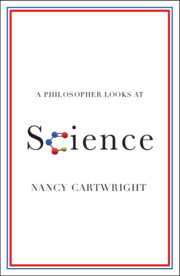Book contents
Introduction
Published online by Cambridge University Press: 10 June 2022
Summary
You see indications of the first everywhere, from newspaper reports on exciting new science results to school texts to the deliberations of funding bodies. The second is widely held among philosophers and is also endorsed by quite a few scientists, though it may not seem so much a part of the popular image of science. I think that with the exception of worries about how quantum theory fits in, the third is central to the popular image: it gives rise to all sorts of familiar conundrums about the possibility of free will, are criminals – or even saints – really responsible for their actions? Will the final theory of everything allow us to predict the future with certainty? But, as I’ll explain, it’s hard to see why you’d hold with (3) if you didn’t believe in (2), which is generally taken as the logical foundation for (3). That’s why I’ve included all three, putting them in this order.
Information
- Type
- Chapter
- Information
- A Philosopher Looks at Science , pp. 1 - 11Publisher: Cambridge University PressPrint publication year: 2022
